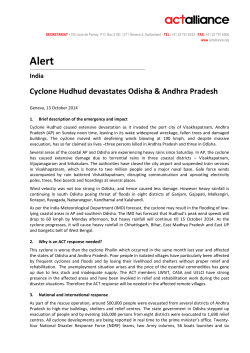
6.2: What are air masses? 1. What is an air mass? Is a large body of
6.2: What are air masses? 1. What is an air mass? 2. How many kinds of basic air masses are there? 3. Air masses move because of ______. 4. What is a jet stream? 5. ________ may occur/happens at the edge of an air mass. 6. What is a continental polar air mass? 7. What is a continental tropical air mass? 8. What is a maritime polar air mass? 9. What is a maritime tropical air mass? 10. What is a front? 11. What is a cold front? 12. What is a warm front? 13. What is a stationary front? 14. What is a cyclone? 15. How does air move in a cyclone? 16. How does air move in an anticyclone? Vocabulary Air mass Front Cyclone Is a large body of air with similar properties all through it. 4 Wind A strong air current high above the ground. Storms Very little water evaporates from the land and ice near the poles. So, an air mass from this area is cold and fairly dry. A large hot desert can cause the air above it to be warm and fairly dry. Even though the air near the poles is cold, water vapor evaporates into the air. An air mass forming over the ocean near the poles is cold, but relatively moist. Humid air has lots of moisture. Over tropical oceans or rain forests, an air mass becomes warm and very humid/moist because water can easily evaporate there. A boundary between two air masses. A cold front brings colder air into an area. - When cooler air moves in, it forces warmer air to move up quickly. This air creates cumulus clouds, creating heavy precipitation. A warm front brings warmer air to an area. - Warmer air moves against cooler air. The warmer air gradually rises above cooler air. Clouds are slow moving and creating longer periods of rain. A front that doesn’t move much or moves back and forth over the same area. A wind that spirals inward around an area of low pressure. Air spins in a counterclockwise direction and flows into a cyclone and rises. Air spins in a clockwise direction and flows away from the center. Quick Summary A cold front often results in heavy, brief precipitation, while a warm front often results in slow-moving clouds and longer periods of precipitation. A cyclone is produced when warm air at the low-pressure center rises and high-pressure air moves in to take its place.
© Copyright 2025





















